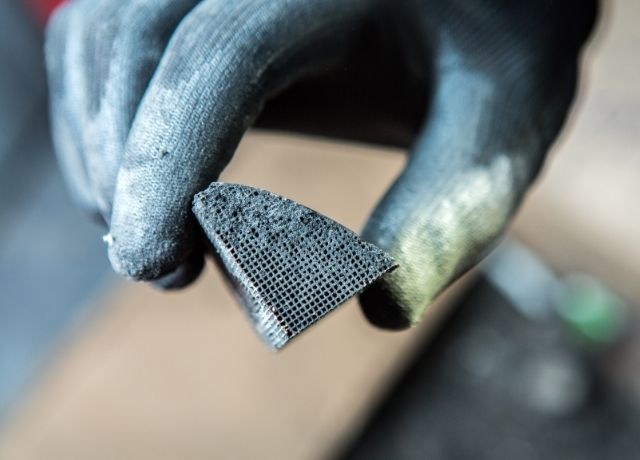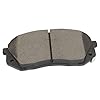Table of Contents

Looking to keep your car’s engine running clean and efficient? A clean catalytic converter is a key part of the equation. When the converter is clogged with dirt, carbon, and other debris, it can no longer perform its primary function of breaking down harmful pollutants before they reach your engine.
This can lead to reduced fuel economy, poor emissions, a gag-inducing odor of rotten eggs, an overheated undercarriage, and even worse performance.
Maintaining a clean exhaust system is essential to avoid the most obvious indicator of an emissions failure: a failed emissions check. A catalytic converter cleaning may be necessary if it isn’t performing properly.
In some cases, it is not possible to remove the catalytic converter from the car to clean it. Luckily In this article, we will show you how to clean a catalytic converter without removing it.
Fahren 2026 New-Gen 9012 HIR2 LED Bulbs, 90000LM 1200% Ultra-Bright, 1:1 Size HIR2 Fog Light Bulb, 6500K Cool IP68 Waterproof, 70000Hrs Lifespan 99.5% Compatible, Back Up Light Assemblies Pack of 2
ANCEL AD310 Classic Enhanced Universal OBD II Scanner Car Engine Fault Code Reader CAN Diagnostic Scan Tool, Read and Clear Error Codes for 1996 or Newer OBD2 Protocol Vehicle (Black)
AstroAI Windshield Cleaner Tool, Car Interior Detailing Cleaning Kit with Extendable Handle and 4 Upgraded High-Density Reusable Microfiber Pads, Auto Glass Wiper Brush Kit for Cars, Blue, 15.9in-21in
SINGARO Car Cup Holder Coaster, Silicone Cup Holder Insert, Universal Non-Slip Cup Holders, Car Accessories Interior for Women and Man Interior Sets 4 Pack Black
Mothers Mag & Aluminum Polish, 5 oz. — Brilliant Shine, Easy to Use, For All Uncoated & Unplated Metals Including Aluminum Wheels, Stainless Steel Trim and Exhaust Tips, Brass & More (05100)
YESLIFE Balaclava Ski Mask for Men and Women, Winter Face Mask, Shiesty for Skiing, Snowboarding & Motorcycle
Kaistyle for Magsafe Car Mount【20 Strong Magnets】Magnetic Phone Holder for Car Phone Holder Mount Dash【360°】Cell Phone Holders for Your Car Accessories for Women Men iPhone 17 Pro Max 16 15 14 13 12
XINDELL Windshield Cleaner Tool – Car Interior Window Cleaning Kit with Extendable Handle & 4 Microfiber Pads, Auto Wiper Inside Windshield Brush for Car & Home Windows
EcoNour 27″ Aluminum Ice Scrapers for Car Windshield | Car Window Scraper and Snow Brush with Ergonomic Foam Grip Winter Accessories (Orange)
Rain-X 820149 WeatherBeater Wiper Blades, 22″ Windshield Wipers (Pack of 2), Automotive Replacement Windshield Wiper Blades That Meet Or Exceed OEM Quality And Durability
How To Clean a Fuel Tank Without Removing | Like a Boss In 2022

What Is A Catalytic Converter?
In an internal combustion engine, the exhaust gases contain pollutants such as carbon monoxide, nitrogen oxides, and hydrocarbons. Designed to reduce harmful exhaust emissions, catalytic converters are a standard feature in all modern automobiles. By converting pollutants into less harmful substances, catalytic converters play a significant role in improving air quality.
The converter uses a ceramic or metal honeycomb-like substrate coated with a precious metal catalyst, usually platinum, or palladium. When exhaust gases pass through the honeycomb, the catalyst causes a chemical reaction that breaks down harmful pollutants into less harmful ones.
The most common type of catalytic converter is the three-way catalyst. The three-way catalytic converter has three chambers: one for oxidizing carbon monoxide and hydrocarbons into carbon dioxide and water vapor, one for reducing nitrogen oxides into nitrogen and oxygen, and one for oxidizing unburned fuel particles into carbon dioxide and water vapor.
A catalytic converter is typically located in the exhaust system of a vehicle and is necessary for the vehicle to meet emissions regulations.
YaberAuto 16-in-1 Jump Starter with Air Compressor 8000A 160PSI Car Battery Jump Starter (All Gas/14L Diesel) 12V Jump Box Car Battery Jumper Starter Portable Jumper Cables, Emergency Tool Kit, Gloves
Dupli-Color EBCL01257 Clear Perfect Match Automotive Top Coat – 8 oz. Aerosol
TRQ Front Ceramic Brake Pad and Rotor Set Compatible with 2015-2020 Hyundai Sonata 2015-2020 Kia Optima 2021-2024 Hyundai Kona Electric
Front Car Windshield Sun Shade Compatible with 07-12 Mercedes GL350 GL450 GL500 | Custom Fit Visor Accordion Fold Style Sun Protector | Silver & Grey 1-pc Set | SS-239
Car Door Step with Roof Rack Mount, 400lb Capacity, Aircraft-Grade Aluminum, Anti-Slip Surface, 6.3-inch Platform, Black
20 Pcs Glow in The Dark Tire Valve Caps Fluorescent Tire Valve Stem Caps, Cool Car Present for Universal Decoration Accessories for Car SUV Bicycle Motorcycles Trucks (Blue)
TRQ Front Sway Bar Stabilizer Link Set Compatible with 2015-2021 Chevrolet Colorado 2016-2019 Suburban 3500 HD GMC Canyon
Tire Inflator Portable Air Compressor – Air Pump for Car Tires,Portable for Car with Pressure Gauge,Tire Inflator with LED Light, for Bike,Motorcycle, Balls
2 Gauge 2 AWG 20 Feet Black + 20 Feet Red Welding Battery Pure Copper Flexible Cable Wire – Car, Inverter, RV, Solar
HOTOR Trunk Organizer – Car Organizer, Foldable Trunk organizer for SUVs & Sedans, Sturdy Car Organization for Car Accessories, Tools, Sundries, Black, 2 Compartments, 21.3″×12.6″×10.6″

Before We Begin:
A few things should be taken into consideration before we learn how to clean a catalytic converter without removing it. The components inside the catalytic converter can become loose in a large number of instances. Unless you remove and replace your catalytic converter, you will not be able to repair your vehicle’s exhaust after it has been damaged.
Internal Oil Consumption:
Internal oil consumption can be the cause of a clogged catalytic converter. When oil enters the cylinders and burns in the heated catalytic converter, it causes the converter to become soiled. Over time, this can lead to a reduction in the effectiveness of the converter, and eventually, it will need to be replaced.
You must always fix an internal oil leak before applying the method of how to clean a catalytic converter without removing it, as it may only work for a limited period before the catalytic converter clogs up again.
Clogged crankcase ventilation, broken valve seals, or worn piston rings are all signs of an inner oil leak. The first thing to look for is a leak in the crankcase ventilation system.
Purified Catalyst:
It’s also possible that bits of the catalytic converter have blown out of it after it has been cleaned internally. If you have any doubts, remove the catalytic converter and perform a visual inspection. But keep in mind that even professional drivers struggle to come up with a solution to this common problem.
Examine the Loosed Parts:
When your catalytic converter starts to give you trouble, it’s important to determine what the issue is. One way to determine this is after you hit catalytic converter with a hammer. This will help determine if there are any loose parts in your catalytic converter.
Your exhaust pipe could become entirely blocked by loose parts in your catalytic converter, causing your car to suddenly halt while you’re traveling. Remove the catalytic converter and have it checked if you hear the rattling sound.
Yicplu Car Seat Gap Filler, 2-Pack Universal Fit Car Seat Gap Plug Anti-Drop with Storage, Soft Foam to Fill The Gap Between Seat and Console, Auto Accessories for SUV Truck Sedan
TRQ Driver Side Power Mirror Textured Black without Heat Compatible with 2012-2021 Nissan NV2500 NV3500 NI1320233
Mothers Mag & Aluminum Polish, 5 oz. — Brilliant Shine, Easy to Use, For All Uncoated & Unplated Metals Including Aluminum Wheels, Stainless Steel Trim and Exhaust Tips, Brass & More (05100)
Airmoto Tire Inflator Portable Air Compressor – Air Pump For Car Tires with Digital Pressure Gauge, LED Light and Auto Shut-Off Function – Cordless Pump for Car, Motorcycle, Bicycle, Ball
Front Car Windshield Sun Shade Compatible with 07-12 Mercedes GL350 GL450 GL500 | Custom Fit Visor Accordion Fold Style Sun Protector | Silver & Grey 1-pc Set | SS-239
Coolpow【Newest Vacuum Magnetic Phone Holder for Car Phone Holder Mount【Movable Vacuum Suction】carmount 2.0 Magsafe Car Mount Cell Phone Holders for Your Car Accessories for iPhone 17 Pro Max 16 15 14
Termitor D1S Light Bulbs, 55,000LM 10X Brighter 6500K Cool White, 1:1 D1S HID Bulb size, IP68 Waterproof, 3-Minute Install, 85k Hrs Lifespan, Pack of 2
NBTEPEM 2pcs Bling Car Cup Holder Coaster, 2.75 inch Anti-Slip Shockproof Universal Fashion Car Coasters Insert Bling Crystal Rhinestone Automotive Interior Accessories for Women (2 pcs, Aquamrine)
AstroAI Tire Inflator Portable Air Compressor Tire Air Pump for Car Tires – Car Accessories, 9.8Ft Cord 12V DC-Powered Auto Pump with Digital Pressure Gauge, LED Light for Bicycle, Balloons, Yellow
USANOOKS Microfiber Cleaning Cloth Grey – 12 Pcs (12.5″x12.5″) – High Performance – 1200 Washes, Ultra Absorbent Microfiber Towel Weave Grime & Liquid for Streak-Free Mirror Shine – Car Washing Cloth
Too Clogged Catalytic Converter:
If your catalytic converter has become so clogged that the engine does not start, you will need to remove it and either uses special tools or replace it. If you’re not comfortable doing this yourself, take your car to a mechanic. A clogged converter can cause serious damage to your engine, so it’s important to clean or replace it as soon as possible.

Common Causes of a Clogged Catalytic Converter:
Before we begin to clean catalytic converter without removing it, you should understand and avoid the following causes of a clogged catalytic converter:
- The catalytic converter’s ceramic honeycomb is broken by driving on uneven roads. The system can become clogged as a result of the shattered fragments.
- Exhaust systems can become contaminated with oil or antifreeze if they are not properly maintained. When heated, the leak becomes clogged with carbon and exhaust gases. The age of the car, faulty seals, poor maintenance, or too much engine oil can all cause a leak.
- Your catalytic converter won’t be able to combust the engine hydrocarbons that enter it if you just drive small journeys. These hydrocarbons will build up till they block the system, at which point they will have to be removed.
- Lack of maintenance also leads to a clogged catalytic converter. If your car isn’t regularly serviced, particles from the engine can build up and eventually block the converter.
So, Is it possible to clean the catalytic converter without removing it? Yes, let’s get right into it:
Auto Amazon Links: No products found. (59 items filtered out)

How To Clean a Catalytic Converter Without Removing It?
If you are satisfied that your car is neither having internal oil consumption nor there are any loosened parts, follow these steps to clean the catalytic converter without removing it.
Step-1) Get Your Catalytic Converter:
The best way to clean catalytic converter without removing it is by using a specified cleaner for catalytic converters. A catalytic cleaner is a chemical that dissolves the built-up material on the catalyst inside the converter.
There are several brands of cleaners available, and most can be purchased at auto parts stores. Follow the directions on the bottle carefully to ensure that you use the cleaner correctly.
It doesn’t matter if you have gasoline, diesel, or hybrid vehicle the catalytic converter, O2 sensors, and exhaust system will all benefit from this procedure.
Keep in mind that if your catalytic converter is cracked, or fractured in any way, these products will not be able to help you. There are certain catalytic converters that have become ineffective over time due to being old and partly clogged. Catalytic converters can be purchased on Amazon and at other retailers.
Step-2) Pour The Cleaner Into the Fuel Tank:
Pour the amount of cleaner suggested in the cleaner’s instructions into the fuel tank. Be careful not to overdose on the product, as this might cause even more damage to your catalytic converter. This is where the cleaner will start doing its work.
Step-3) Take Your Car for a Short Ride:
Get behind the wheel of your vehicle and see if it performs better than it did previously. If you have a clog in your catalytic converter, you can burn it out by driving your car at high RPMs (exceeding 3000 RPM) for an extended period of time. Monitor your vehicle’s coolant temperature to ensure it doesn’t overheat.
Your car will perform better and emit fewer emissions of gases and accelerate more quickly if the cleaning operation is a success.
These were the simple 3 steps on how to clean a catalytic converter without removing it hopefully, now your car catalytic converter is as clean as before.
Auto Amazon Links: No products found. (78 items filtered out)
Keep the Following In Mind While Working:
Avoid the following when working on how to clean a catalytic converter without removing it:
- Assembling the component by soaking it in corrosive agents such as bleach or grout-eating gel.
- Thinners or lacquer should not be used to fill up your gas tank
- Do not use harsh chemicals or solvents when cleaning the converter. These can damage the delicate filtering surfaces inside the converter.
- Cars that don’t have compatible catalytic converters
- Attempting to saw off an already damaged catalytic converter, which could result in bodily injury or damage to the vehicle.

Hire a Professional In Case:
It’s important to know how the catalytic converter works and how to fix it if you decide to remove a blockage yourself. There are a few things you’ll need, including eye protection, a wrench, cleaner, hot water, and a power washer. If you want to keep your car in top shape, we suggest doing some research online.
If you notice that your car’s catalytic converter is severely clogged and you don’t know how to clean it, you should consult a professional. If the converter’s ceramic substance has melted, the mechanic will replace it. Because they’ve been in the business for so long, they know just how to handle these kinds of circumstances.
Honda Genuine Extended Life Antifreeze/Coolant Type 2, 50/50 Pre-Diluted, 1 Gallon
16″ 16″ 12″ Windshield Wiper Blades Replacement for Jeep Wrangler JL 2018 2019 2020 2021 2022 2023 Premium All Weather Front Rear Wipers Set – OEM Quality (Pack of 3)
CANDECraftCo Car Air Hanging Fragrance Oil, Car Auto Freshener for Essential Oils, Scents Fragrance Aromatherapy Automobile Diffuser, Long Lasting (Pistachio & Salted Caramel)
SINGARO Car Cup Holder Coaster, Silicone Cup Holder Insert, Universal Non-Slip Cup Holders, Car Accessories Interior for Women and Man Interior Sets 4 Pack Black
PULIDIKI Car Cleaning Gel Cleaning Putty Car Interior Cleaner Car Detailing Kit Car Cleaning Slime Car Cleaning Supplies Car Accessories Gifts for Men Women Purple
49.2inch Ice Scraper and Snow Brush for Car Windshield,Extendable Snow Removal Tool with Foam Grip and 360° Silicone Brush Head for Car SUV Truck Auto (Orange)
Upgraded 4LEDs Wireless LED Strobe Lights with Remote Control, High Brightness 8 Colors Type-C Charge IP65 Waterproof Anti-Collision Warning Lights for Car Interior Drone Bike Halloween Christmas Day
HYVOHEX Tire Inflator Portable Air Compressor, 1 Min Fast Inflation Cordless Bike Pump with Digital Pressure Gauge LED Light, 150 PSI Electric Air Pump for Car Tires, Bicycle, Motorcycle, Ball (Grey)
Front Car Windshield Sun Shade Compatible with 07-12 Mercedes GL350 GL450 GL500 | Custom Fit Visor Accordion Fold Style Sun Protector | Silver & Grey 1-pc Set | SS-239
KPY Window Visor Compatible with Lexus IS250 IS350 ISF 2006-2013, 4PC Rain Guard Side Window Vent Deflectors Tape-On Style, 2006 2007 2008 2009 2010 2011 2012 2013
Why You Must Clean Catalytic Converter:
A car’s catalytic converter needs to be cleaned from time to time for many reasons. Such as:
It is Illegal:
The absence or inadequacy of catalytic converters is a violation of the law as well as negligence. To drive a car with a broken catalytic converter is generally illegal. Where smoking exhaust pipes constitute a serious infraction, having a catalytic converter that doesn’t work may result in a fine.
Less Control Over Gas Flow:
When a catalytic converter becomes blocked, it loses its ability to convert harmful gases into safe ones. If your vehicle’s catalytic converter becomes blocked, you will likely experience a decrease in fuel economy and an increase in emissions. Hence, makes it necessary to learn how to clean a catalytic converter without removing it.
Damage Other Components:
When a catalytic converter goes bad, it can cause the other components in the car to overheat and potentially damage them. This further affects the vehicle and can be costly to repair. It’s important to get a clogged catalytic converter fixed as soon as possible.
The Performance Suffers:
The car’s components are all interdependent and meant to perform together as a unit. If your car’s catalytic converter is bad, the engine efficiency and fuel efficiency will take a hit.
This is because the catalytic converter is responsible for reducing harmful emissions from the engine. When it’s not working properly, those emissions can build up and cause a variety of problems for your car.
The penalty and the maintenance expenses can be avoided if you maintain your car’s catalytic converter on a constant schedule.
Does Cleaning Catalytic Converter Always Work?
A new catalytic converter is necessary if cleaning it with this method does not yield any improvements. The cost of a replacement is high, but it ensures that your vehicle is safe and functional.
Moreover, if you have an internal oil or fluid leak, cleaning may not help. The hot converter will be clogged with heavy smoke and soot if these leaks aren’t repaired. Damaged piston rings or crankcase ventilation obstructions are indications of leaks.
Bottom Line:
To conclude, we recommend before you proceed to clean catalytic converter without removing make sure to hit catalytic converter with a hammer once. It will give you an idea if there is any loose part inside.
Catalytic converters that have been damaged, cracked, or clogged may only be cleaned by the cleaning solution but not repaired. However, you can still follow our steps on how to clean a catalytic converter without removing it. These steps will definitely improve the overall performance of your car if followed properly.
We should also point out that catalytic converters, particularly in luxury cars, can command extremely expensive costs due to the presence of precious metals inside their construction. You can always consult a professional if you don’t have proper knowledge about the complete process. Thanks!!























































































































































































































































